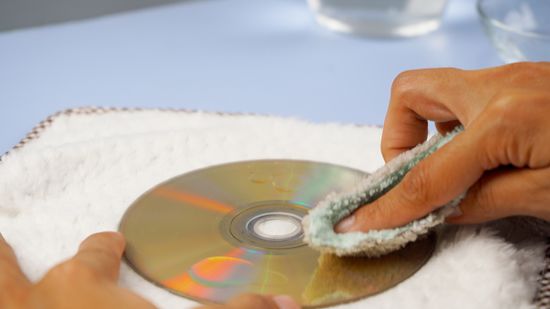For generations, gardeners and flower enthusiasts have been enthralled with the vivid blooms of the Chinese Hibiscus, often called Hawaiian Hibiscus or Rose of China.
This annual flower is distinct in horticulture history because of its delicate petals, a striking rainbow of hues, and cultural importance.
The Chinese hibiscus, with roots in Asia, is now widely grown in tropical climates worldwide and is regarded as a valued symbol of grace and beauty.
This essay will examine the intriguing appeal of Chinese hibiscus, its varied variations, rich cultural history, and cultivation advice.
Read on to discover the fascinating world of this famous flower species, regardless of whether you’re a passionate gardener or admire the beauty of nature’s works.
Table of contents
- History of Chinese Hibiscus
- What Morphological Features Characterize Chinese Hibiscus:
- Uses of Chinese Hibiscus
- History of Hawaiian Hibiscus
- History of Rose of China (Hibiscus mutabilis)
- How to take care of Hibiscus Plants
- What are the Common Hibiscus Diseases and Pests?
- What are the benefits and uses of hibiscus plants beyond aesthetics?
- Differences Between Chinese Hibiscus, Hawaiian Hibiscus, and Rose of China.
- FAQs
- Conclusion
- References
- Recommendations
History of Chinese Hibiscus
The Chinese Hibiscus, officially known as Hibiscus rosa-sinensis, gets its name from its long history of cultivation in China.
It is thought to have originated in Asia, specifically China, and has been grown for millennia because of its symbolic meaning and exquisite ornamentation.
It is culturally significant in many places, such as Asia and the Pacific Islands, where it is frequently connected to tender elegance, beauty, and love.
Read ALSO: Marigold: A Profile of an Annual Flower
What Morphological Features Characterize Chinese Hibiscus:
An evergreen shrub with glossy green foliage and stunningly colorful blossoms, the Chinese Hibiscus is a spectacular sight. It usually reaches a height of 6 to 10 feet, and its trumpet-shaped, enormous, stunning flowers bloom in various colors and patterns.
These flowers can have one or two layers of petals, and they bloom for just a day at a time, with new blooms appearing all during the flowering season.
Chinese hibiscus is grown primarily for its beautiful and colorful flowers, which are used for ornamental purposes. With its eye-catching blossoms, this plant is a favorite for decorative purposes in gardens, landscapes, and interior potted arrangements.
Uses of Chinese Hibiscus
- Symbolism: The Chinese hibiscus has symbolic significance throughout numerous cultures. It is symbolized by grace and charm and is frequently utilized in ceremonies and festivities. It is linked to beauty, femininity, love, and delicate elegance.
- Traditional Medicine: The Chinese hibiscus plant has been utilized in conventional medicine in various ways. Its flowers, leaves, or calyces provide antioxidant-rich infusions or extracts that can be employed in herbal medication for inflammation, high blood pressure, and digestive problems. Scientific studies on its therapeutic qualities are still being conducted, nevertheless.
- Hair Care: Chinese hibiscus extracts are used in several hair care products in different cultures. Its qualities are thought to strengthen hair follicles, improve luster, and encourage hair growth. Hair oils, conditioners, and shampoos can all contain extracts.
- Dyeing: In some civilizations, the vivid hues of Chinese hibiscus blossoms have long been utilized as natural dyes to produce shades of red, pink, or purple on textiles and food.
Read ALSO: Geranium, Zonal: A Flower you don’t know about
History of Hawaiian Hibiscus
The Hawaiian Hibiscus, Hibiscus brackenridgei in scientific jargon, is indigenous to the Hawaiian Islands and thrives in certain ecological niches.
It is mostly found in shrublands and dry forests, particularly on Kauai, Maui, Molokai, and Oahu islands. This plant does well on soil that drains well and receives lots of sunlight.
What Does it Symbolism in Hawaiian Culture?
There is a lot of significance to the Hawaiian hibiscus in Hawaiian culture. It is beloved as Hawaii’s official state flower, symbolizing the island’s elegance, grace, and fragility.
In Hawaiian culture, the flower, frequently utilized in leis and as ornamental accents for rituals and festivals, represents hospitality, love, and the friendly attitude of the islands.
Uses of Hawaiian Hibiscus
Hibiscus brackenridgei, commonly known as the Hawaiian hibiscus, has a variety of functions.
- Symbolic Significance: The Hawaiian Hibiscus has great cultural and symbolic significance as the official state flower of Hawaii. It is frequently utilized in leis and garlands and as a decorative accent in ceremonies and festivals to represent the Hawaiian Islands’ beauty, distinctiveness, and friendly nature.
- For Ornamental Uses: The Hawaiian Hibiscus is grown for its eye-catching look in gardens and landscapes. Its vivid yellow blooms with crimson cores make it a desirable option for decorative landscaping that enlivens outdoor areas.
- Traditional Medicine: Certain Hawaiian hibiscus sections have been employed in herbal medicines, albeit their usage in conventional medicine is less widespread than that of some other hibiscus species. While scientific studies on its medicinal qualities are ongoing, infusions or extracts from its flowers and leaves will likely provide potential health advantages.
- Conservation Efforts: Besides its immediate applications, the Hawaiian Hibiscus is significant because of conservation and protection initiatives. Since this species is indigenous to Hawaii and holds cultural significance, conservation programs and efforts work to protect it.
- Education and Awareness: The Hawaiian Hibiscus is a teaching tool to raise awareness among residents and tourists of the value of conservation and the necessity to preserve the islands’ distinctive biodiversity.
History of Rose of China (Hibiscus mutabilis)
Hibiscus mutabilis, the scientific name for the Rose of China, is a deciduous shrub member of the Hibiscus genus. It may grow up to fifteen feet in height and is known for its rapid growth.
In addition to its striking, saucer-shaped flowers, which can be white, pink, or deep red and frequently change color as they age, the plant has broad, lobed leaves.
The Rose of China’s amazing seasonal changes are among its most intriguing features. In a single day, the flowers go through an amazing color transformation.
They begin the day as white or light pink, grow darker in hue during the day, and have turned a rich shade of red by late afternoon. One unique and captivating characteristic of the plant is its dramatic color shift within a single day.
Read Also: Lewisia: All you need to know about the Garden Flower
What is Rose of China (Hibiscus mutabilis) Used For:
The Hibiscus mutabilis plant is used for its alleged medical benefits in various cultures, including traditional Chinese medicine. The leaves and blossoms are said to have medicinal qualities that help heal ailments like high blood pressure, inflammation, and digestive problems.
Furthermore, the plant is linked to ideas of metamorphosis, flexibility, and change in certain folklore and cultural beliefs, reflecting the flower’s capacity to change its hue in a single day.
The Rose of China is an aesthetically pleasing plant. It has historical and traditional relevance in many different cultures due to its remarkable color-changing blossoms, quick growth, and traditional medicinal purposes.
How to take care of Hibiscus Plants
Caring for Hibiscus plants involves several key aspects to ensure their health and vibrancy:
- Sunlight: Hibiscus plants thrive in full sun, so place them where they can receive at least 6-8 hours of daylight daily. However, provide some shade during the hottest part of the day, especially in very hot climates.
- Watering: Maintain consistent moisture levels in the soil. Water the plant deeply, but allow the soil to dry slightly between watering sessions. Avoid waterlogging or letting the ground become excessively dry.
- Soil: Use well-draining soil rich in organic matter. A mix of potting soil and perlite or sand works well for container-grown Hibiscus. Ensure good drainage to prevent root rot.
- Fertilization: Feed your Hibiscus regularly during its growing season (spring through summer) with a balanced fertilizer. Reduce feeding during fall and winter when growth slows down.
- Pruning: Regularly prune Hibiscus to promote bushiness and flowering. Remove dead or weak branches and prune to shape the plant after the flowering season.
- Pests and Diseases: Look for common problems like aphids, whiteflies, and spider mites. Treat with insecticidal soap if necessary. Hibiscus can also be susceptible to fungal diseases; ensure good air circulation and avoid overwatering to prevent these issues.
- Winter Care: For outdoor Hibiscus in cooler climates, consider bringing them indoors during winter or protecting them from frost. Reduce watering and stop fertilizing during the dormant season.
- Container Care: If growing in containers, ensure adequate drainage holes and repot every 2-3 years to refresh the soil and root space.
What are the Common Hibiscus Diseases and Pests?
Here are some common diseases that come from Hibiscus Plants:
Common Diseases and Symptoms:
- Fungal Diseases: Hibiscus is prone to fungal issues like leaf spots, powdery mildew, and root rot. Symptoms include yellowing or browning of leaves, spots on foliage, or a powdery white substance on leaves and stems.
- Bacterial Blight: This disease causes water-soaked lesions on leaves, which turn brown or black. It can lead to leaf drop and plant decline.
- Viral Diseases: Hibiscus can also be affected by viral infections, causing mottled, distorted, or discolored leaves, stunted growth, and reduced flowering.
B. Pest Infestations and Prevention Strategies:
- Aphids: These small, soft-bodied insects cluster on young shoots, sucking sap and causing distorted growth. Use insecticidal soap or neem oil, or introduce natural predators like ladybugs.
- Whiteflies: These tiny, white insects feed on the underside of leaves, causing yellowing and wilting. Use yellow sticky traps and apply insecticidal soap or neem oil.
- Spider Mites: They cause stippling, discoloration, and webbing on leaves. Increase humidity, rinse leaves with water, or use miticides.
What are the benefits and uses of hibiscus plants beyond aesthetics?
Medicinal Properties and Health Benefits:
- Antioxidant Properties: Hibiscus contains antioxidants like flavonoids and anthocyanins, known for their potential health benefits in reducing oxidative stress and inflammation.
- Heart Health: Some studies suggest that Hibiscus tea may help lower blood pressure and cholesterol levels, contributing to heart health.
- Digestive Aid: Hibiscus teas or infusions aid digestion, alleviate constipation, and promote a healthy digestive system.
- Potential Anti-diabetic Effects: Research indicates that Hibiscus extracts might help regulate blood sugar levels, offering potential benefits for individuals with diabetes.
B. Culinary Uses and Recipes:
- Beverages: Hibiscus flowers are used to prepare herbal teas, infusions, or cold drinks like Hibiscus tea, commonly enjoyed for their refreshing taste and potential health benefits.
- Culinary Ingredient: Dried Hibiscus flowers, or flor de jamaica, are used in various cuisines to impart a tart, cranberry-like flavor. They’re used in jams, sauces, desserts, and even as a garnish in salads.
C. Commercial Applications in Cosmetics and Fragrances:
- Cosmetics: Hibiscus extracts are used in skin care products for their purported anti-aging and moisturizing properties. They may promote skin elasticity, help reduce wrinkles, and improve skin texture.
- Fragrances: Hibiscus scents are utilized in perfumes and fragrances for their floral, sweet, and sometimes citrusy notes, adding depth and complexity to various scent compositions.
Read Also: 15 Learning Flower Arrangement Courses in 2024 | Free & Paid
Differences Between Chinese Hibiscus, Hawaiian Hibiscus, and Rose of China.
| Features | Chinese Hibiscus | Hawaiian Hibiscus | Rose of China |
| Origin | Native to East Asia, particularly China | Endemic to the Hawaiian Islands. | East Asia, including China. |
| Appearance | Large, showy flowers in various colors like red, pink, yellow, and orange. | Large, bright yellow flowers with red centers. It symbolizes Hawaii’s state flower and the islands’ beauty and hospitality. | Flowers that change color within a day, typically starting as white or pale pink in the morning, turning deeper pink, and then red by late afternoon. |
| Cultural Significance | It is admired for its ornamental beauty and used symbolically in various cultures for its associations with beauty and delicate elegance. | It holds deep cultural value in Hawaii, used in leis and as a symbol of the islands’ beauty and welcoming spirit. | It is notable for its color-changing blooms and rapid growth. |
| Uses | They are primarily cultivated for ornamental purposes in gardens and landscapes. It is also used symbolically and sometimes in traditional medicine for potential health benefits. | It is primarily valued for its cultural significance and ornamental beauty. It is also used symbolically and occasionally in traditional medicine. | It is grown for ornamental purposes due to its unique color-changing flowers. |
| Botanical Name | Hibiscus brackenridgei | Hibiscus mutabilis |
FAQs
Chinese Hibiscus thrives in warm, humid climates with plenty of sunlight and well-draining soil.
Water Hawaiian Hibiscus regularly, keeping the soil evenly moist but not soggy.
No, the Rose of China is an annual flower that completes its life cycle within one year.
Common pests include aphids and whiteflies, while diseases such as powdery mildew and leaf spot can also affect Chinese Hibiscus.
Yes, fertilize Hawaiian Hibiscus with a balanced fertilizer every 4-6 weeks during the growing season to promote healthy growth and abundant blooms.
The Rose of China comes in various colors, including red, pink, orange, yellow, and white.
Conclusion
Chinese Hibiscus, Hawaiian Hibiscus, and Rose of China are stunning annual flowers that grace gardens with their vibrant blooms and lush foliage. These versatile plants can thrive in various climates and soil conditions, making them an ideal choice for gardeners looking to add a pop of color to their outdoor spaces.
With proper care and maintenance, these hibiscus varieties can bloom throughout the growing season, bringing joy and beauty to any landscape. Whether planted in containers or directly in the ground, these annual flowers will make a statement with their showy blossoms.


